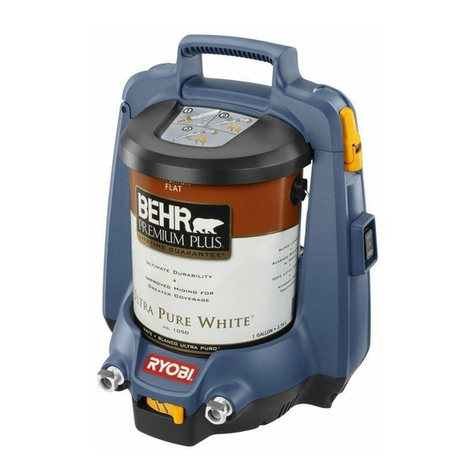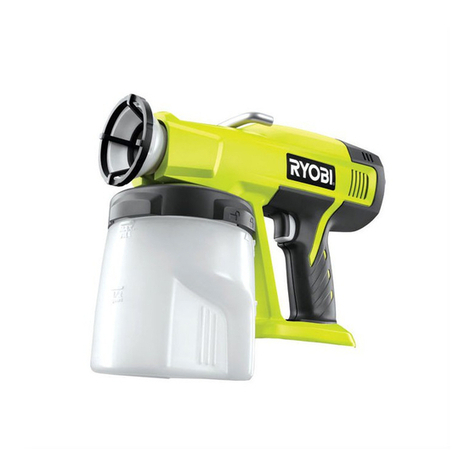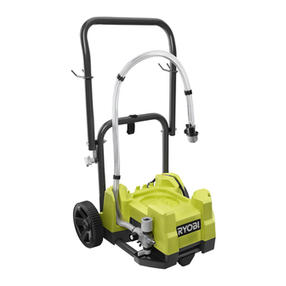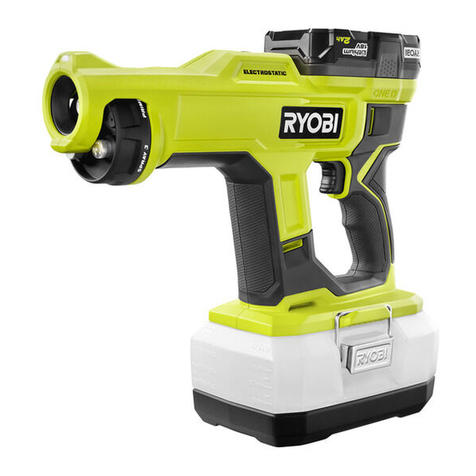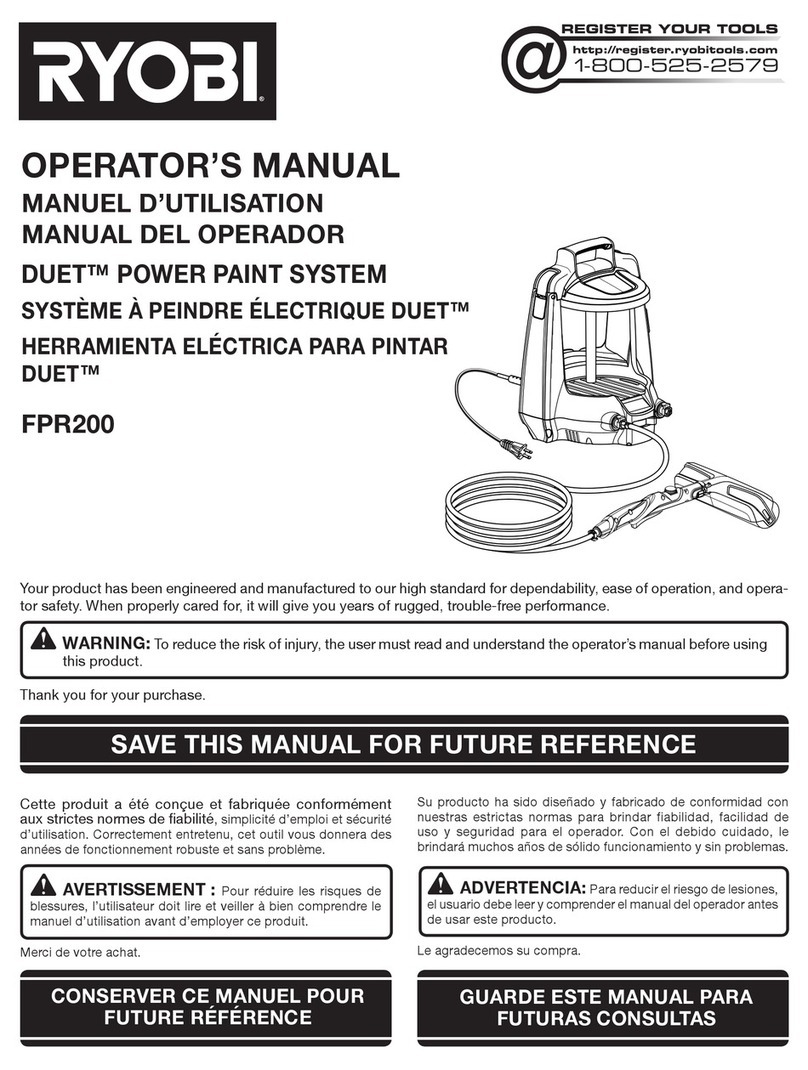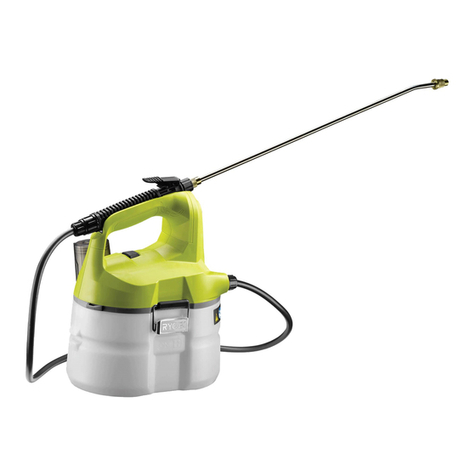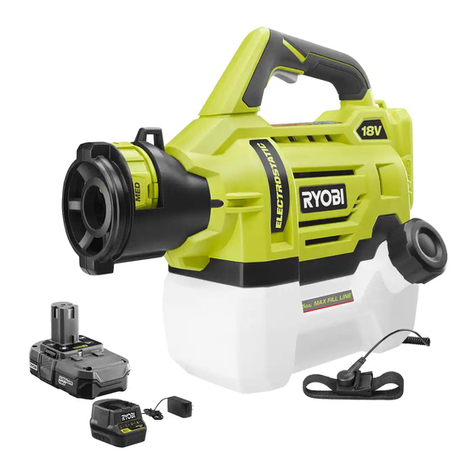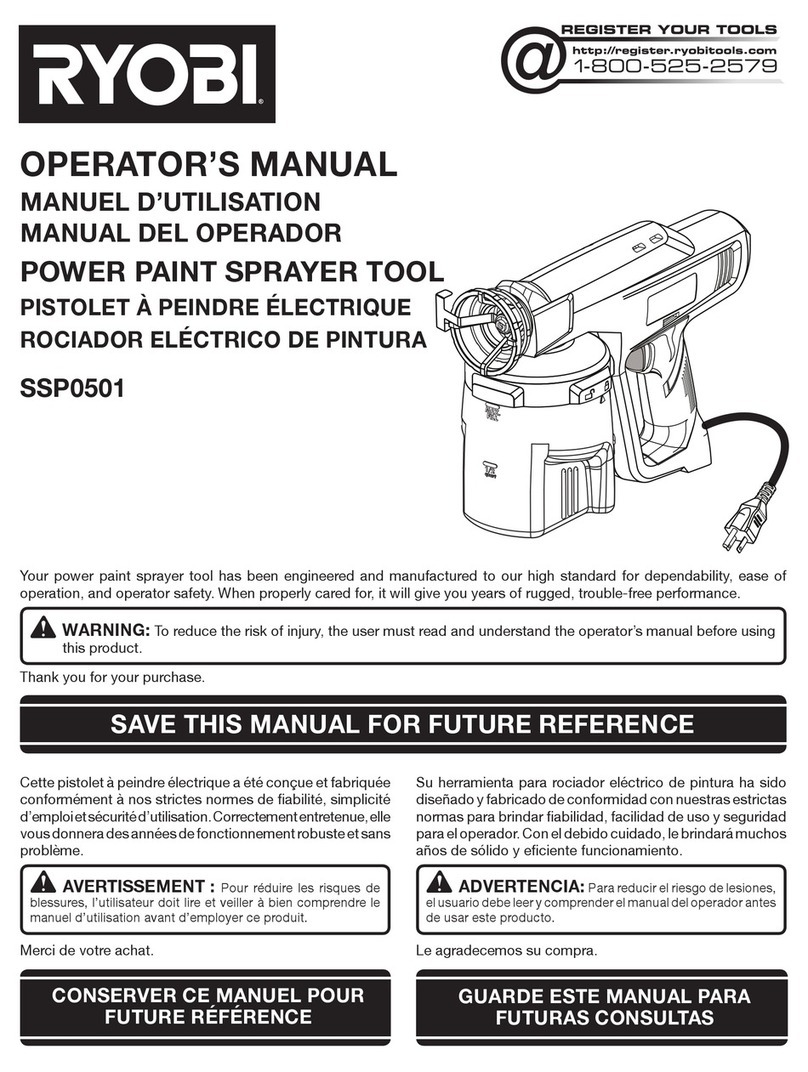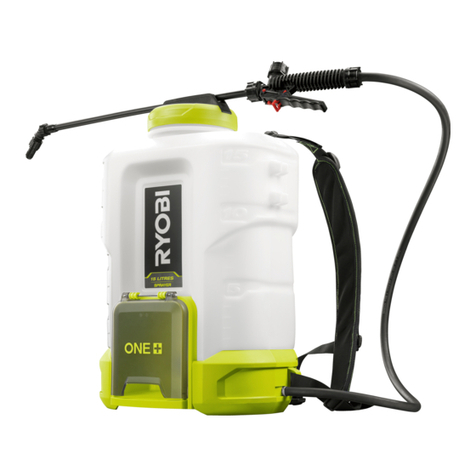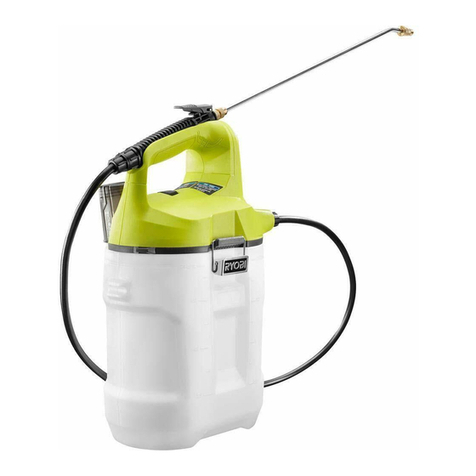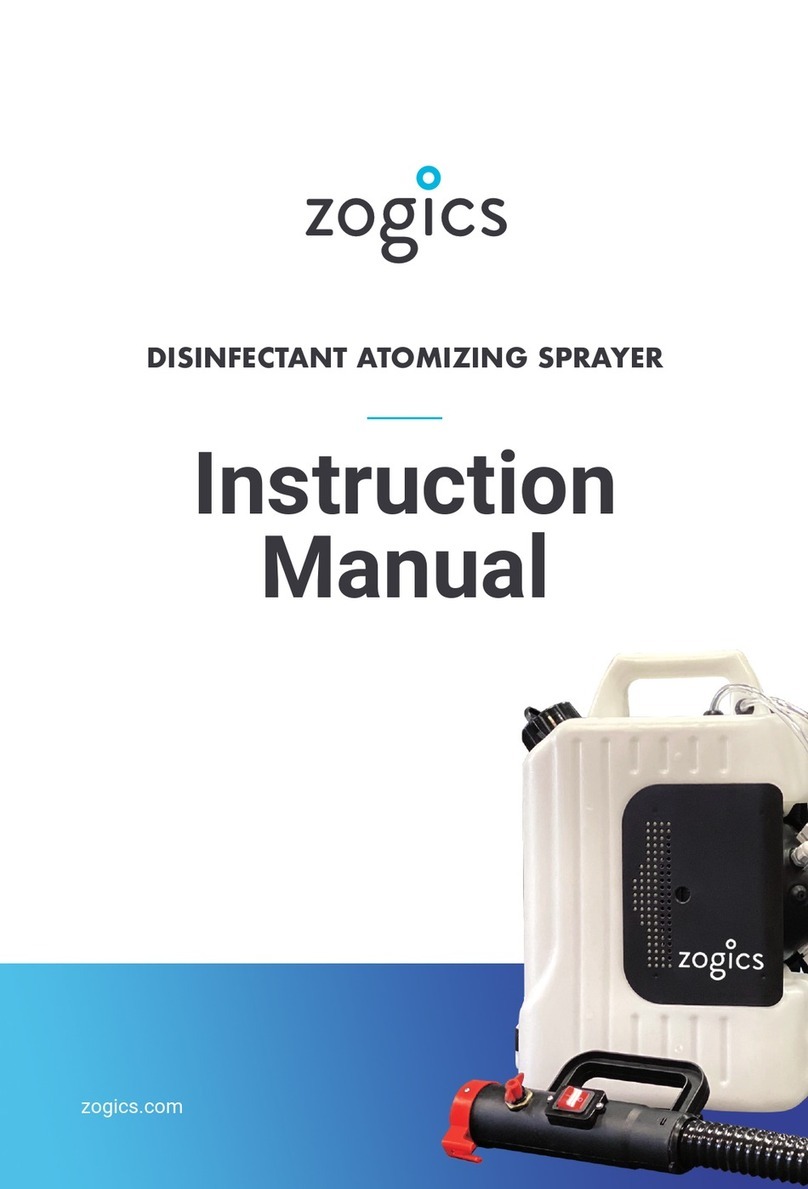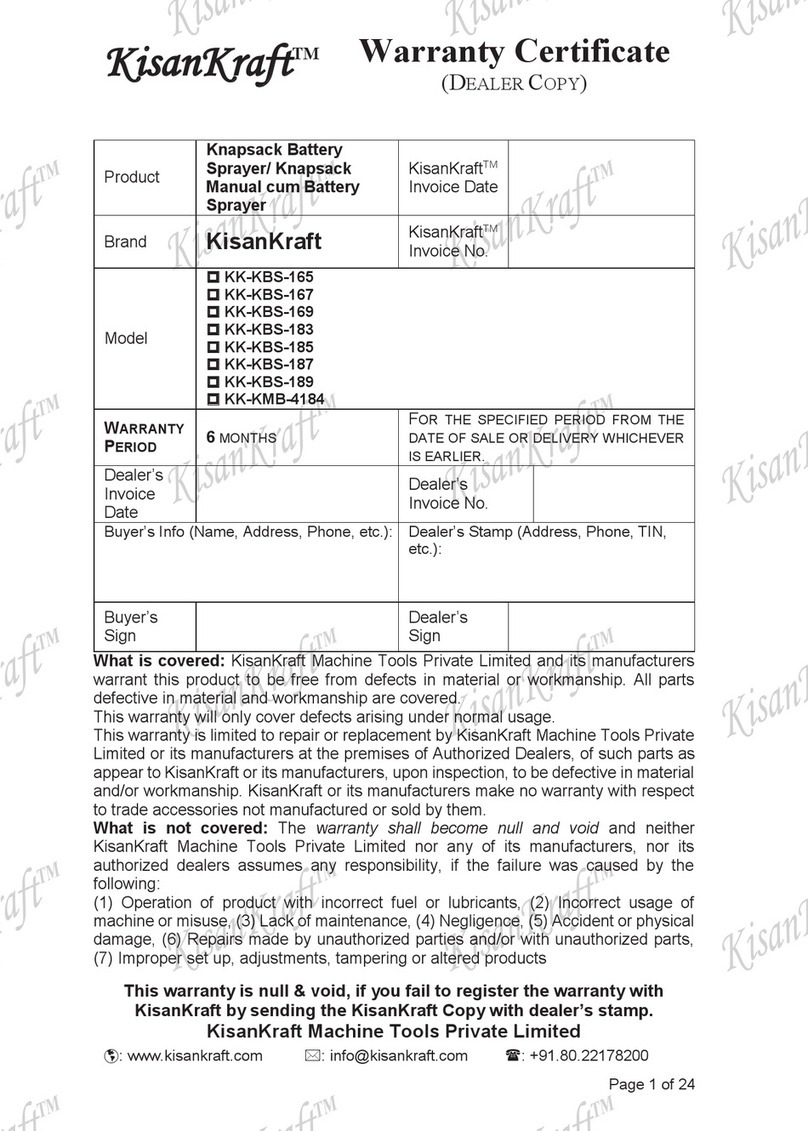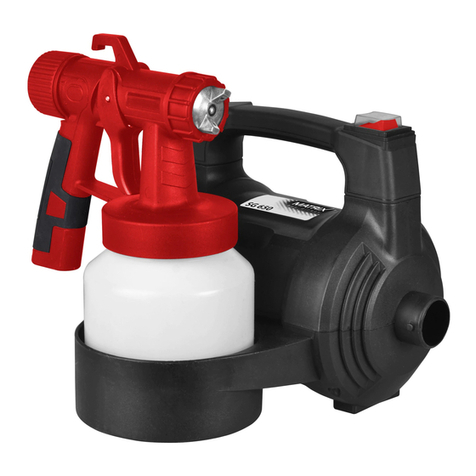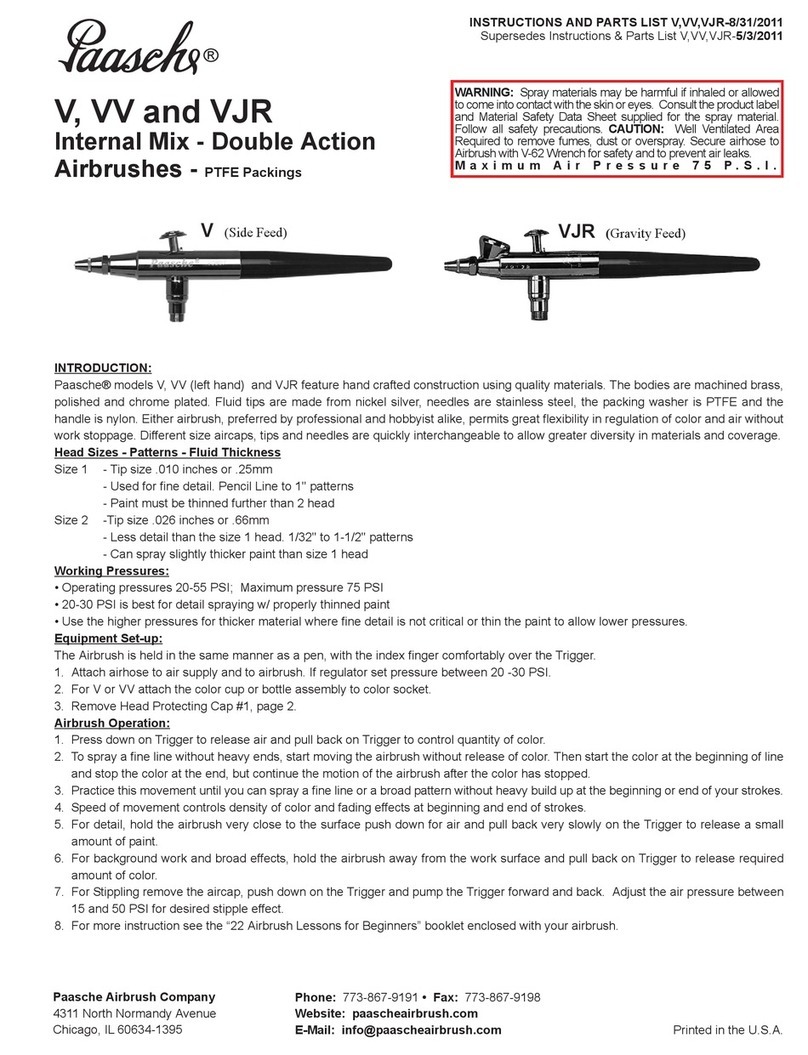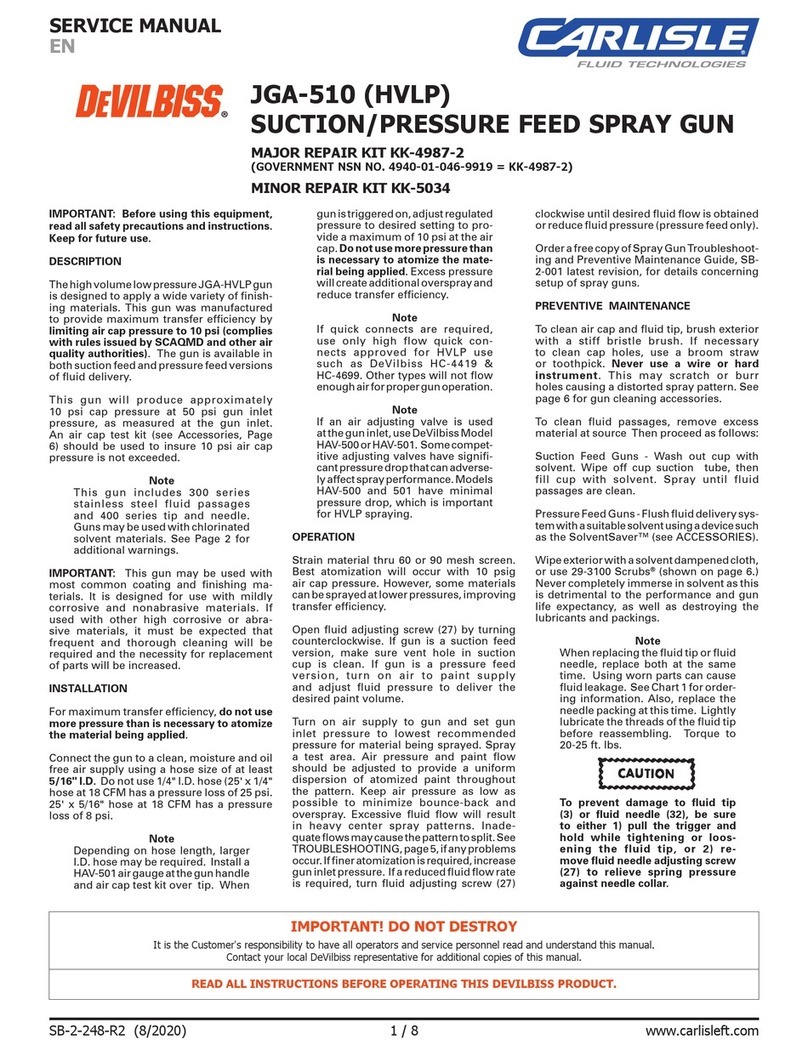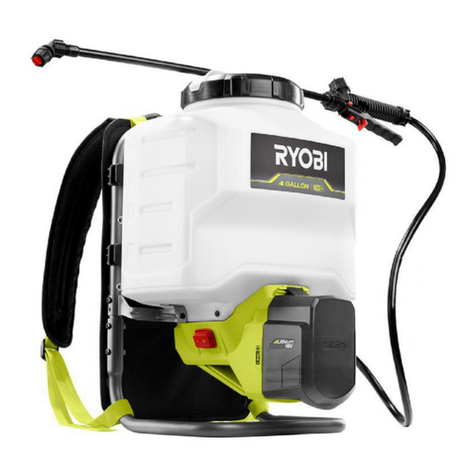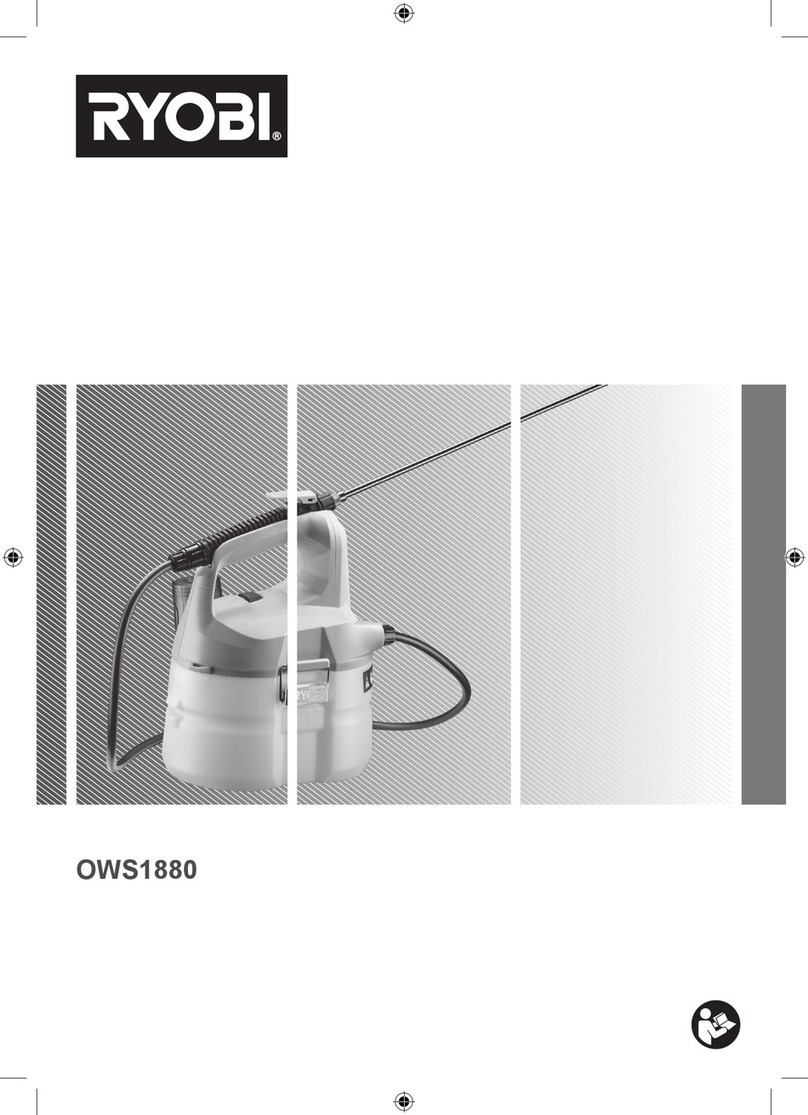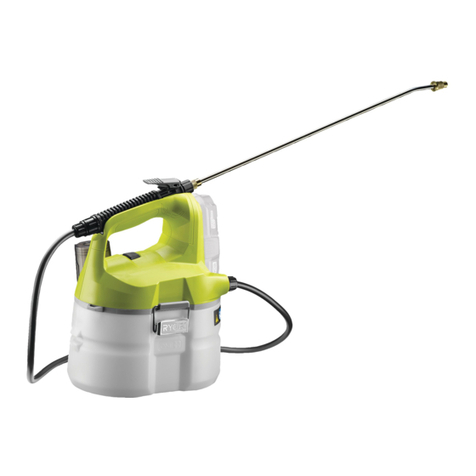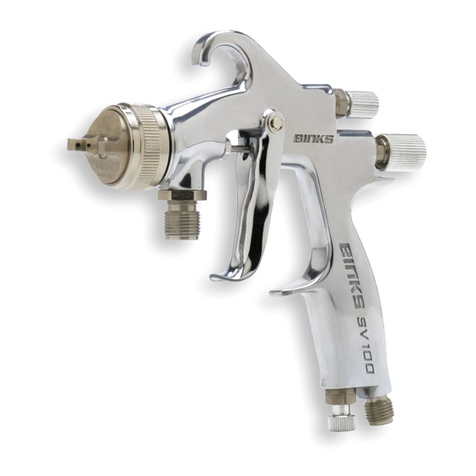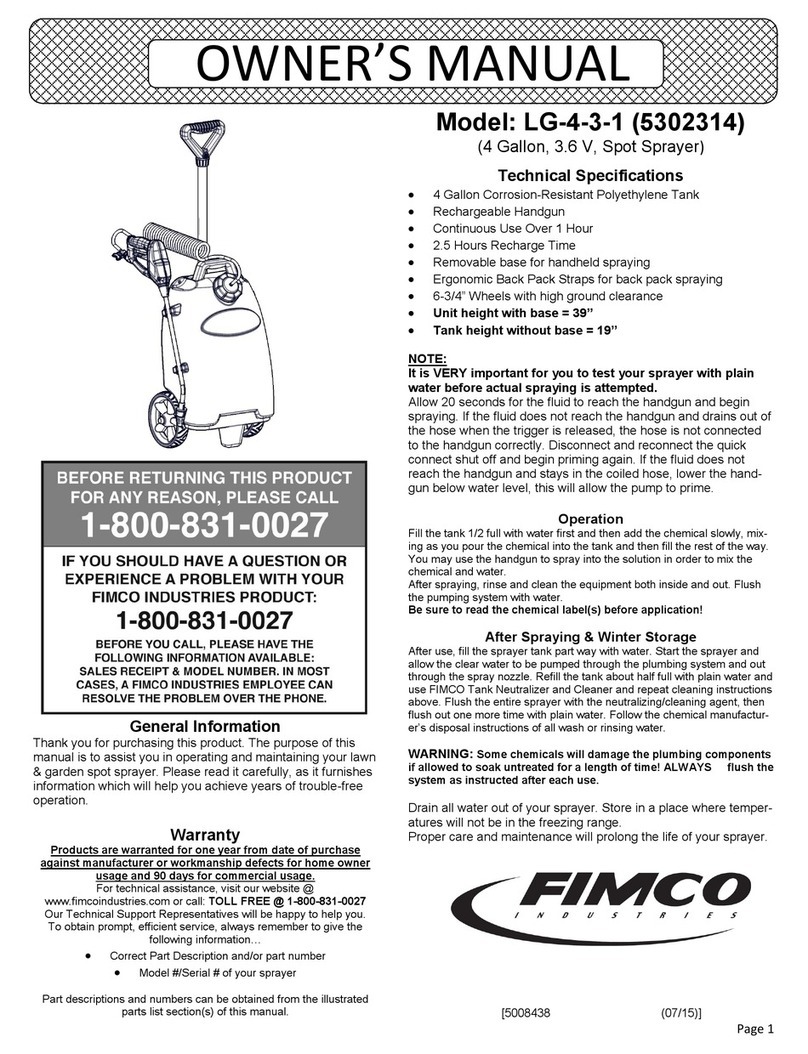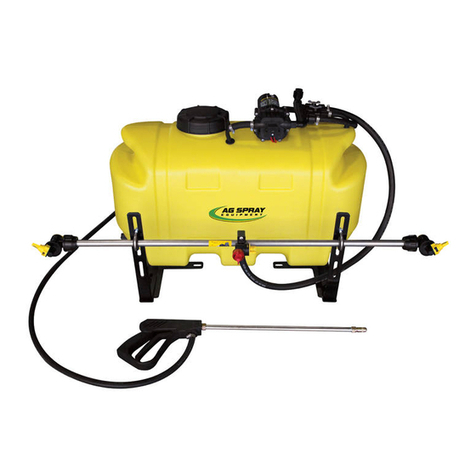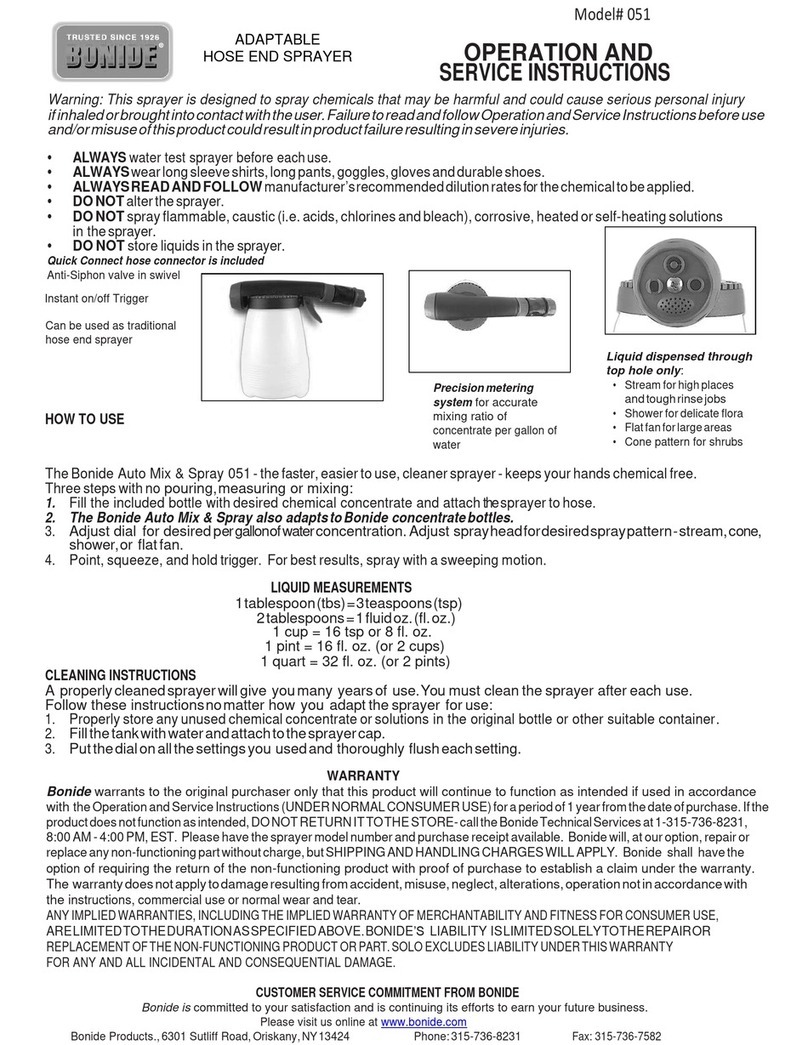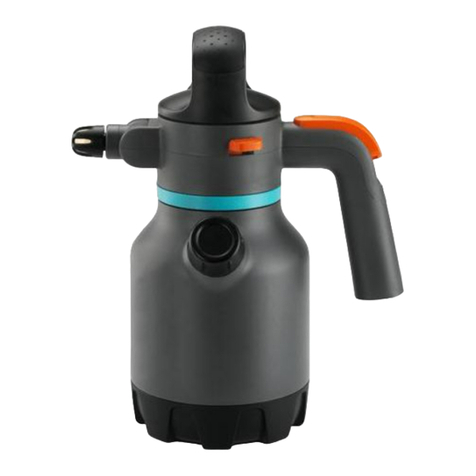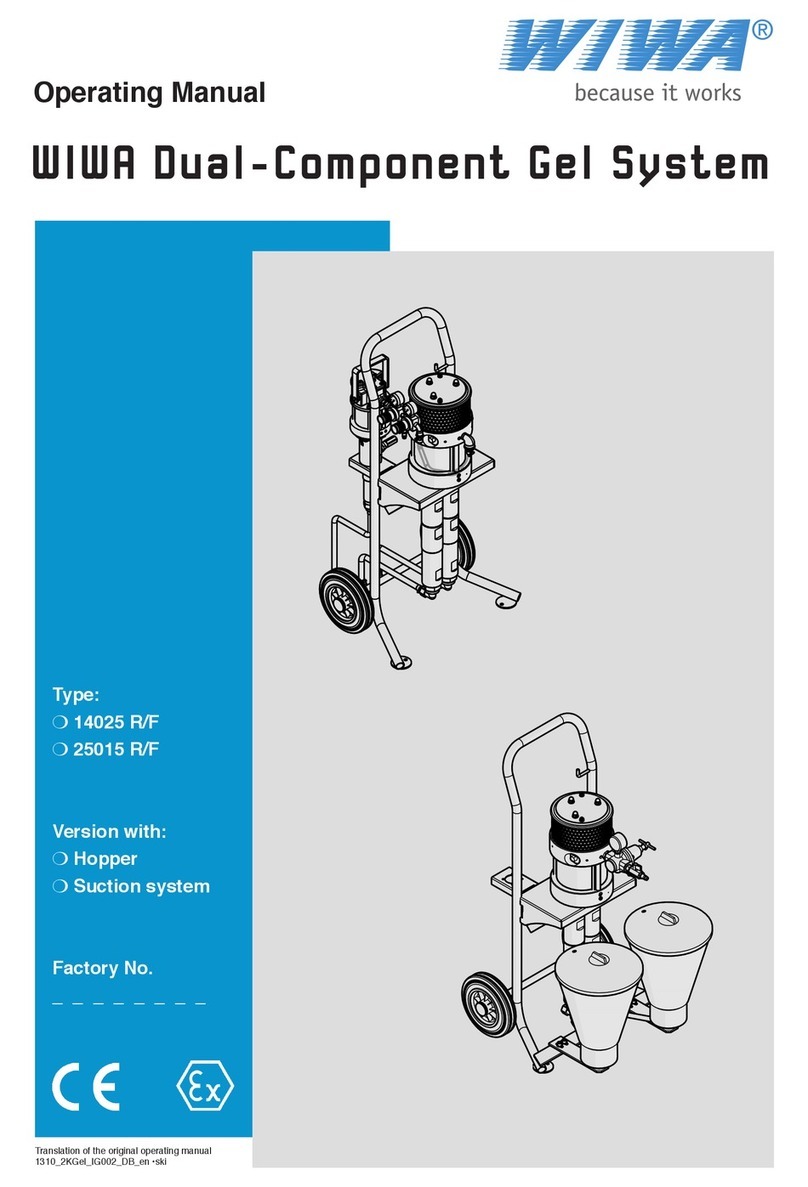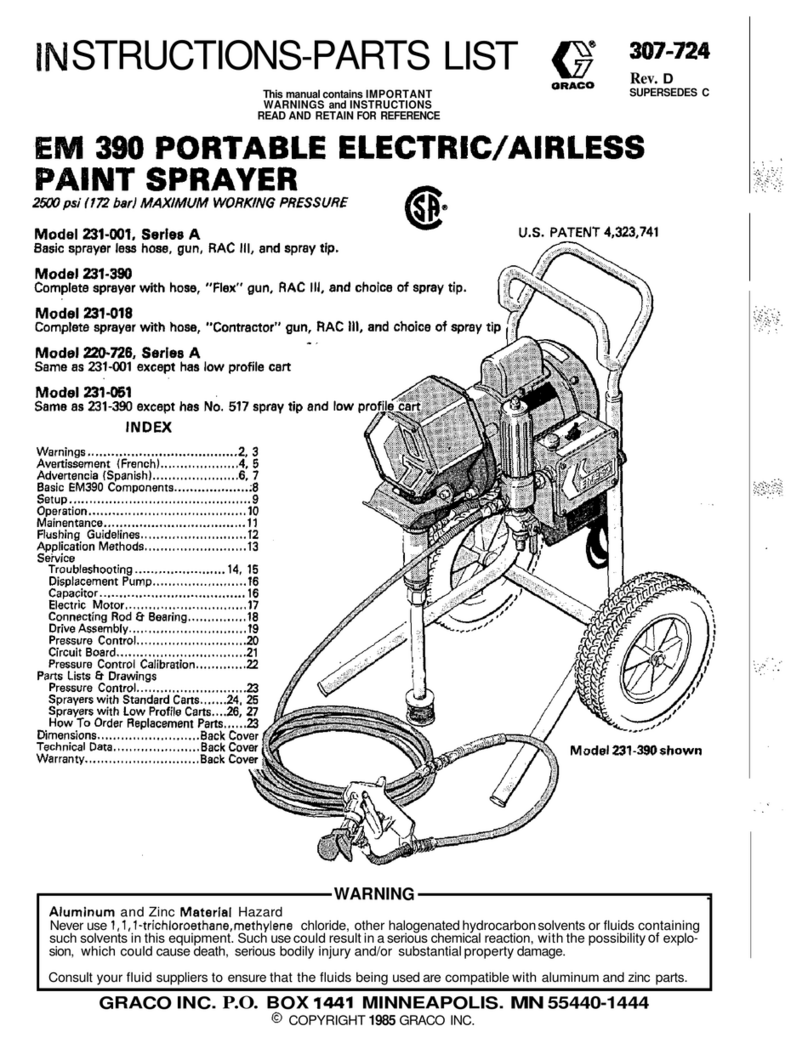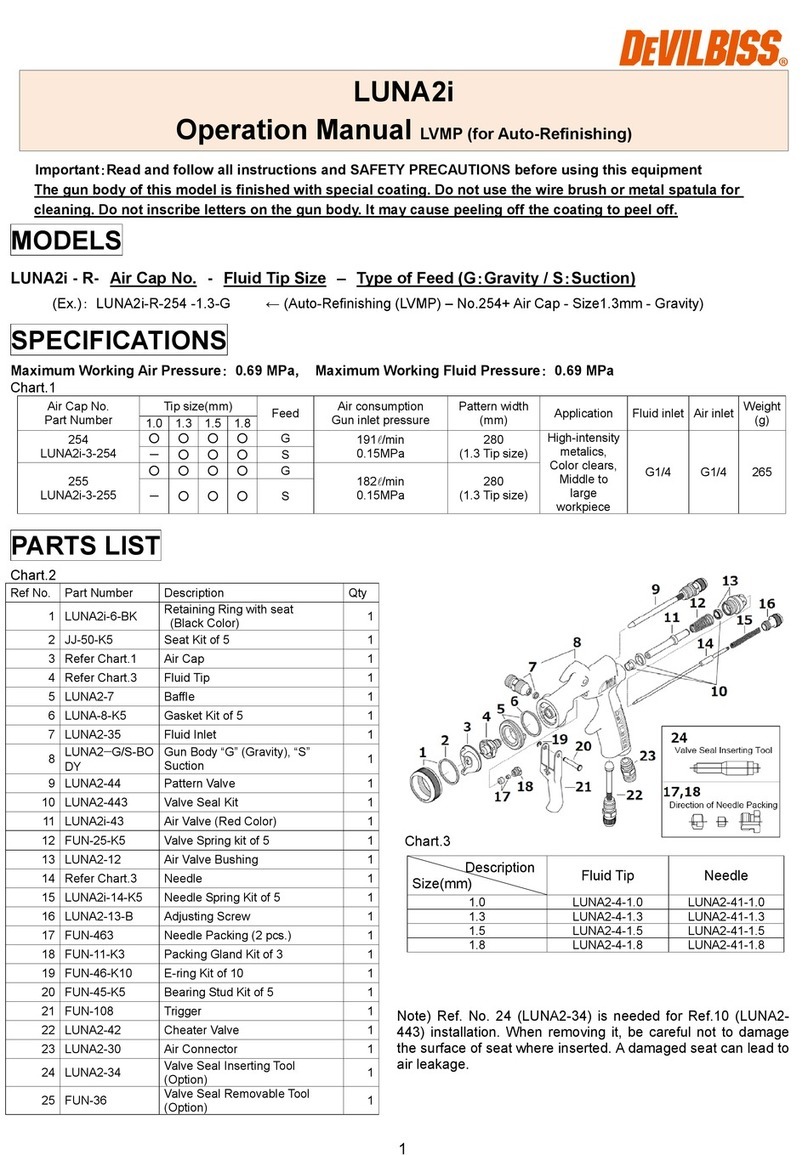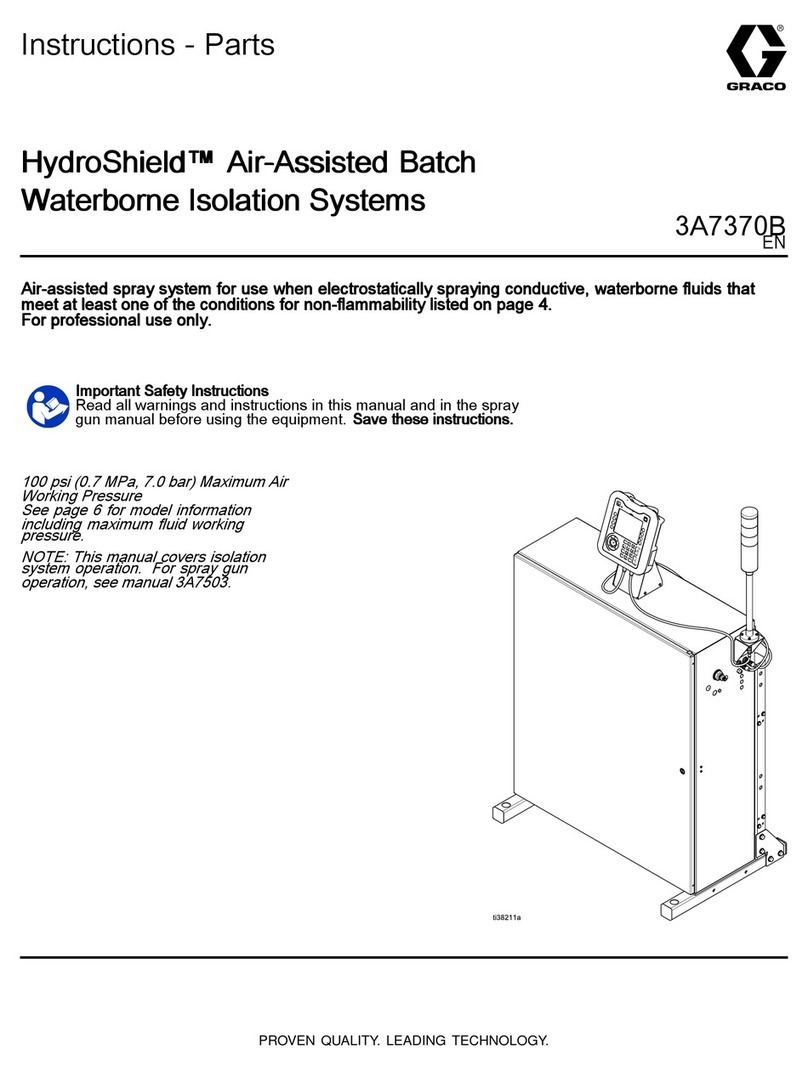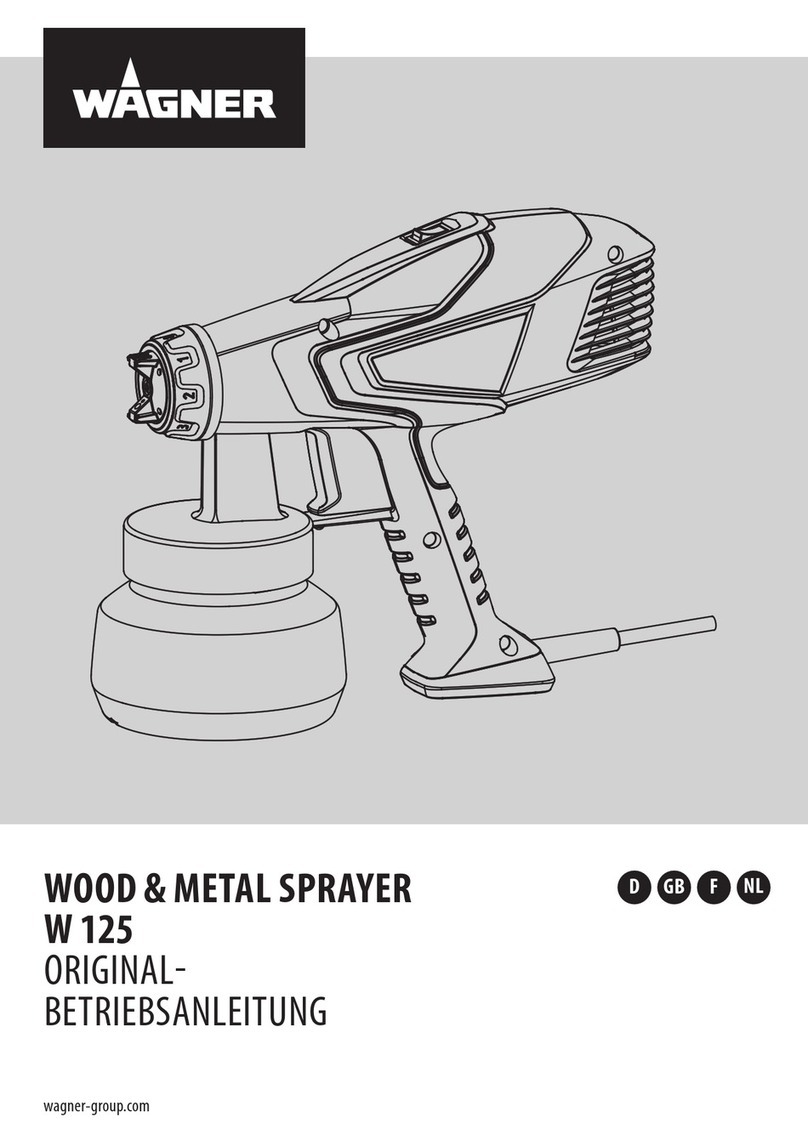
1
English
GB
FR DE ES IT NL PT DK SE FI NO RU PL CZ HU RO LV LT EE HR SI SK GR TR
961067241-01_EU.indd A3 6/24/09 3:27:23 PM
GENERAL POWER TOOL SAFETY WARNINGS
WARNING
SAVE THESE INSTRUCTIONS. To reduce the
risks of fire or explosion, electric shock, and
the injury to persons, read and understand all
instructions included in this manual. Be familiar
with the controls and the proper usage of the
equipment.
READ ALL INSTRUCTIONS
KNOW YOUR PAINT TOOL. Read the operator’s
manual carefully. Learn the machine’s applications
and limitations as well as the specific potential
hazards related to this tool.
WARNING: To reduce the risk of fire or explosion:
Do not spray flammable or combustible materials
near an open flame or sources of ignition such as
cigarettes, motors, and electrical equipment.
For units intended for use with only water-based or
mineral spirit-type materials with a minimum flash
point of 60°C, do not spray or clean with liquids
having a flash point less than 60°C.
Paint or solvent flowing through the equipment is able
to result in static electricity. Static electricity creates
a risk of fire or explosion in the presence of paint or
solvent fumes. All parts of the spray system, including
the pump, hose assembly, pistol-grip sprayer, and
objects in and around the spray area shall be properly
grounded to protect against static discharge and
sparks.
Use only conductive or grounded high-pressure
airless paint sprayer hoses specified by the
manufacture.
Verify that all containers and collection systems are
grounded to prevent static discharge.
Connect to a grounded outlet and use grounded
extension cords. Do not use a 3 to 2 adapter.
Do not use a paint or a solvent containing
halogenated hydrocarbons.
Keep spray area well ventilated. Keep a good supply
of fresh air moving through the area. Keep pump
assembly in a well ventilated area.
Do not smoke in the spray area.
Do not operate light switches, engines, or similar
spark producing products in the spray area.
Keep area clean and free of paint or solvent
containers, rags, and other flammable materials.
Know the contents of the paints and solvents being
sprayed. Read all Material Safety Data Sheets
(MSDS) and container labels provided with the
paints and solvents. Follow the paint and solvent
manufacturer’s safety instructions.
Fire extinguisher equipment shall be present and
working.
WARNING: To reduce the risk of skin injection:
Do not aim the nozzle at, or spray any person or
animal.
Keep hands and other body parts away from the
discharge. For example, do not try to stop leaks with
any part of the body.
Always use the nozzle tip guard. Do not spray without
nozzle tip guard in place.
Only use a spray tip specified by the manufacturer.
Use caution when cleaning and changing spray tips.
In the case where the spray tip clogs while spraying,
follow the manufacturer’s instructions for turning off
the unit and relieving the pressure before removing
the spray tip to clean.
Do not leave the unit energized or under pressure
while unattended. When the unit is not in use, turn off
the unit and relieve the pressure in accordance with
the manufacturer’s instructions.
High pressure spray is able to inject toxins into the
body and cause serious bodily injury. In the event that
injection occurs, seek medical attention immediately.
Check hoses and parts for signs of damage. Replace
any damaged hoses or parts.
This system is capable of producing 19.3 Mpa (2800
psi). Only use replacement parts or accessories that
are specified by the manufacturer and are rated a
minimum of 20.7 Mpa (3000 psi).
Always engage the trigger lock when not spraying.
Verify the trigger lock is functioning properly.
Verify that all connections are secure before
operating the unit.
Know how to stop the unit and bleed pressure quickly.
Be thoroughly familiar with the controls.
For household use only.
WARNING: To reduce the risk of injury:
Always wear appropriate gloves, eye protection and a
respirator or mask when painting.
Do not operate or spray near children. Keep children
away from equipment at all times.
Do not overreach or stand on an unstable support.
Keep effective footing and balance at all times.
Stay alert and watch what you are doing.
Do not operate the unit when fatigued or under the
influence of drugs or alcohol.
Do not kink or overbend the hose.
Do not expose the hoses to temperatures or
to pressures in excess of those specified by the
manufacturer.
Do not use the hose as a strength member to pull or
lift the equipment.
